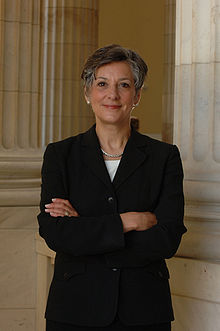
WASHINGTON, D.C. (Press Release) – U.S. Representatives Allyson Y. Schwartz (D-Pennsylvania), and Peter King (R-New York), were among a bipartisan coalition introducing the Power, Efficiency and Resiliency (POWER) Act on Thursday, June 19. The legislation modifies tax incentives for two energy efficient technologies, combined heat and power (CHP) and waste heat to power (WHP).
CHP systems generate both electricity and heat from a single fuel source. According to a study from the Oak Ridge National Laboratory, CHP could be used to produce up to 20 percent of U.S. electrical capacity by 2030. This level of deployment would generate $234 billion in new investment, create nearly one million new highly skilled jobs, dramatically reduce energy consumption and carbon emissions, and improve the competitiveness of U.S. manufacturing by reducing energy costs. Additionally, by generating power where it is used, CHP systems ensure that critical facilities—such as hospitals, police stations and water treatment plants—are able to continue operating when the electrical grid goes down.
WHP systems recover the waste heat produced by industrial processes and use it to generate electricity. An Environmental Protection Agency Study estimated that WHP could be used to produce 10 gigawatts of emissions free electricity (enough to power 10 million homes), reduce costs to industry by $3 billion, and create 160,000 jobs.
“The Power Act incentivizes investment in energy efficient systems that protect our environment, encourage economic growth, and ensure that hospitals and other critical facilities are able to continue operating in emergencies, even when the electric grid goes down” said Schwartz. “That is why this legislation has the support of Democrats and Republicans, as well as a diverse coalition of business, labor, energy and environmental organizations.”
_____________________________
Keeping Up With Jewish Public Officials
_____________________________
The POWER Act reduces the initial capital cost of deploying these energy efficient projects by providing CHP and WHP with tax incentives on par with those available for renewable energy. Specifically, the legislation:
1. Increases the investment tax credit (ITC) for combined heat and power from 10 percent to 30 percent
Increasing the credit to 30 percent will place CHP on par with other energy sources that benefit from the ITC, including solar and fuel cells.
2. Applies the ITC to waste heat to power
Waste heat to power systems are currently excluded from the ITC.
3. Applies the ITC to the first 25 megawatts (MW)Power Eff of CHP projects—up from 15 MW—and eliminates the 50 MW project size cap
Expanding the ITC will incentivize additional projects, increasing the impact of the ITC and resulting benefits
4. Extends the Investment Tax Credit for an additional two years, through 2018.
In order to be eligible for the ITC, projects must be operation before the credit expires—December 31, 2016 under current law. A two year extension will provide a reasonable time frame for equipment purchase, installation, and permitting.
*
Preceding provided by Congresswoman Allyson Y. Schwartz of Pennsylvania… Articles in San Diego Jewish World on Jewish Democratic women in the U.S. Senate and House of Representatives are sponsored by Laura Galinson in memory of her father, Murray Galinson.